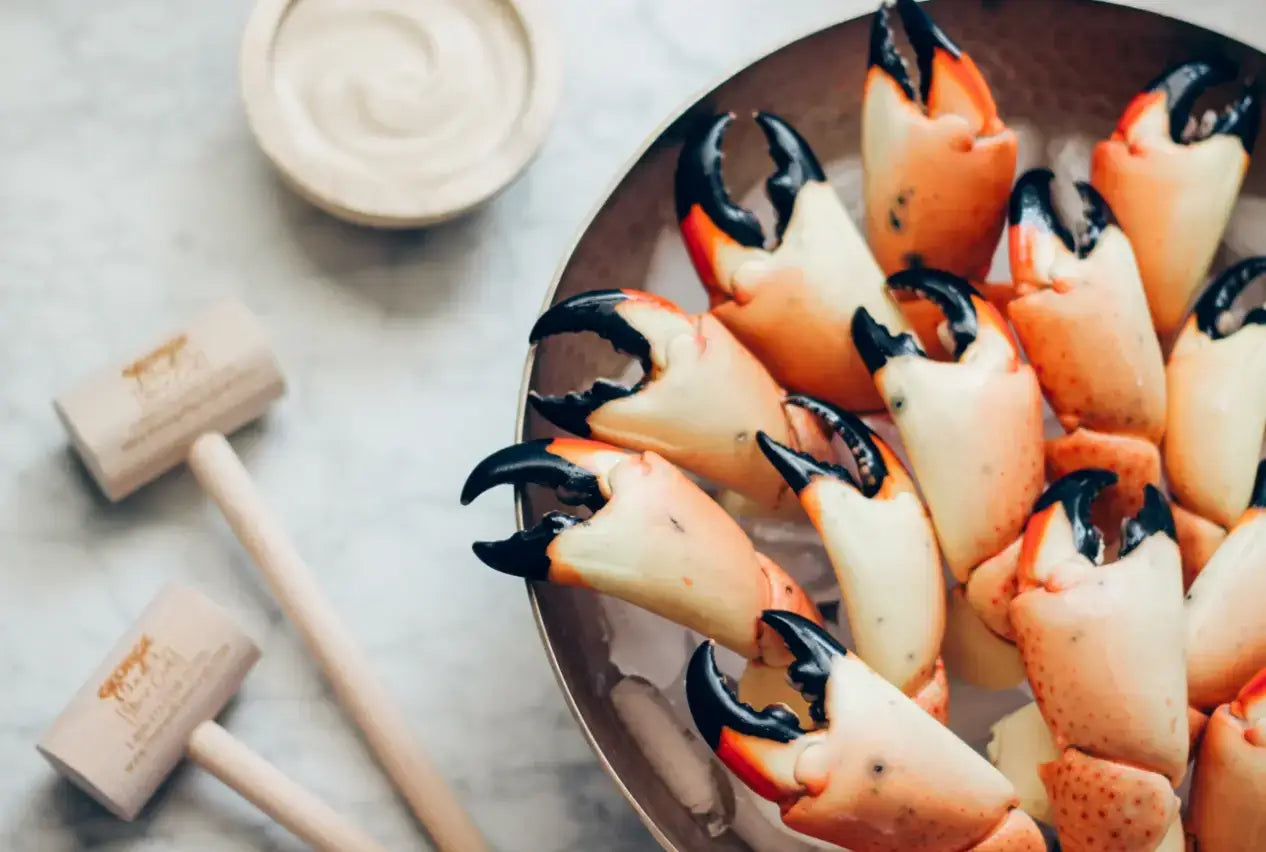
Easter’s sweetest catch! Sign up to enjoy 20% off our delicious stone crab claws on orders of $200 or more.
Call us with questions 1.800.273.2722
Florida Stone Crabs: 10 Facts About the Atlantic and Gulf Delicacy

Florida stone crabs are a popular delicacy on the American east coast. Their decadent flavor and harvest sustainability make them a perfect dish for seafood lovers. East coast restaurant-goers may not know very much about the crustacean that makes it onto many dinner plates throughout the year. Here are 10 random facts about the Florida stone crab.
Location
Although Florida stone crabs are named after a state, their territory is much more vast. They can be found in western North Atlantic waters from Connecticut to Belize. They also live in the Gulf of Mexico waters where most of the crabs are caught for commercial use.
Habitat
Florida stone crabs live in holes 6 inches (15.24 cm) to 3 feet (0.91 m) deep. The crabs dig using shells that can often be found outside the hole. Stone crabs like to live in water 1 foot (30.48 cm) to 5 feet (1.52 m) deep.
Look
Florida stone crab claws are brownish red with gray spots. Their underside is tan, and they have black on the tips of their large, unequally sized claws. Females have larger bodies than males while males have larger claws.
Diet
Oysters, small mollusks, polychaete worms, and other crustaceans are the stone crab's favorite food, however, they have also been known to eat seagrass and carrion.
Predators
The small crabs are food for several species along the Atlantic and in the Gulf of Mexico. Grouper, octopus, sea turtles, and horse conch all enjoy the Florida stone crab for meals.
Molting
Molting is the shedding of the outer exoskeleton so the crab can grow. Juvenile crabs can molt two or more times per year while adults typically molt once. They wait for night to molt because they are extremely vulnerable without their shell. The crabs can easily lose their claws for an easy escape from predators. Lost claws will regenerate and take about a year to grow back.
Lifespan
Typically, Florida stone crabs live 7-8 years, and they take 2 years to reach sexual maturity. Females must molt before mating and the male will stay with the female to protect her, sometimes for days, after mating. The larvae have 6 stages and emerge as adults after 4 weeks.
Gulf Stone Crabs
Interbreeding happens between Florida stone crabs and, the closely related, Gulf stone crabs. Although the two species diverged about 3 million years ago, the fishing industry treats the two as one species.
Harvest
In Florida, the harvest season for stone crabs is from mid-October to mid-May. The meat is harvested by taking one claw and releasing the crab back into the water. While taking both claws is legal, it leaves the crab with no way to defend itself. Most of the crabs are caught in the Gulf of Mexico and all are caught wild. Fishery management has kept the supply stable, so the stone crabs continue to thrive.
Cost
Florida stone crab is expensive. This season the price starts at $27.95 per pound! Typically, supply and demand drive price and that's the situation for Florida stone crabs. The past two seasons have had below-average yields and that has driven up the price. However, the management of the harvest also drives the price up. Florida stone crabs are highly regulated. This keeps the population flourishing and ensures that seafood lovers can enjoy the crabs for years to come.
That's all you need to know about the Florida stone crab. Their claws go great with melted butter and mustard sauce.
Don’t wait until the next time you find yourself in Florida to sit down and enjoy this wild delicacy!

